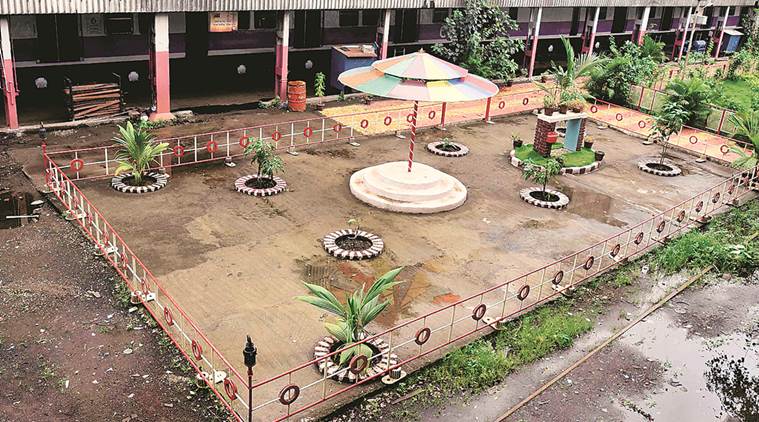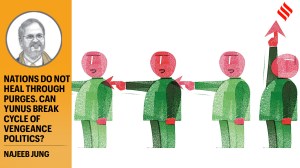Stay updated with the latest - Click here to follow us on Instagram
At Matunga railway workshop, recycled scrap used to create ‘zoo’, recreation centre
These are some of the 25 animal models built from railway scrap in the workshop where railway engineers and welders have put these items as part of a beautification programme — their own ‘zoo’ of sorts.
 The scrap yard has been converted into a garden. (Express photo by Kevin DSouza)
The scrap yard has been converted into a garden. (Express photo by Kevin DSouza)
Inside the Matunga railway workshop stands a meek cow, its body made of an old wash basin. There is also an ostrich with white wings fashioned from the window grilles of a suburban local train, a horse lifting its body that is built with an old fire extinguisher and a giraffe with a neck of nuts and bolts.
These are some of the 25 animal models built from railway scrap in the workshop where railway engineers and welders have put these items as part of a beautification programme — their own ‘zoo’ of sorts.
Employees in the century-old workshop where maintenance and periodic overhauling of rakes is undertaken have re-used scrap from trains, including old broken glasses from windows, protective window grilles and defunct lamps used formerly by station masters and air pressure tubes.
Vaibhav Dubey, junior engineer and the brain behind the menagerie, said: “Making an animal collection from railway scrap helped us re-use scrap in a better way. During my visit to other railway workshops, I had come across a similar idea where employees had re-used railway scrap.”
Engineers have also converted part of a dumping space in their workshop to a green zone.
“We used to dump waste generated from old rakes, coaches and engines in the empty space. To beautify it, we developed a green zone whose boundaries were made with old, protective grilles used in windows of Direct Current (DC) rakes that are no longer in use. We have used the grilles of five old coaches,” said Manoj Bhavsar, the assistant workshop manager.
Last year, a team of 15-20 officials in the workshop undertook various beautification works. The workshop boasts of a vertical garden at the entry of the paint-workshop department, paintings by staff members and thought-provoking messages regarding saving the environment and recycling water. Officials said the garden is a welcome relief from the surroundings that have machinery and heavy equipment.
Nirmal Kumar, a senior section engineer at the EMU corrosion repair department, said: “At least 1,000 tonnes of waste is generated on a daily basis. While the remaining waste is sold off in scrap, we have used the best of what was available. Each of the fitters and workers involved in the project contributed to developing the space by taking time out from their regular work.” In another space, officials have re-used glass from the window frames of the motorman’s cabin to make a multi-coloured umbrella. Placed right in the centre of their recreation centre, employees call it selfie- point.
“While this may fetch us no money, we hope it will remain in this century-old workshop for another hundred years,” Dubey added.







